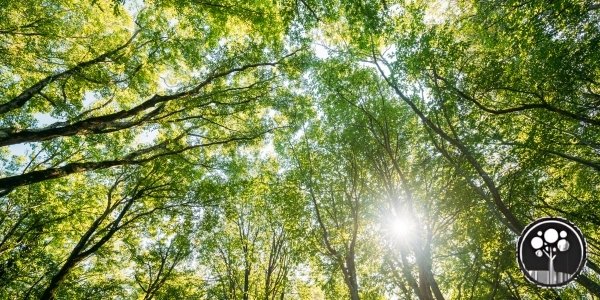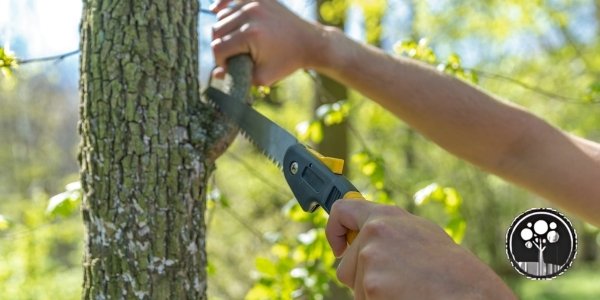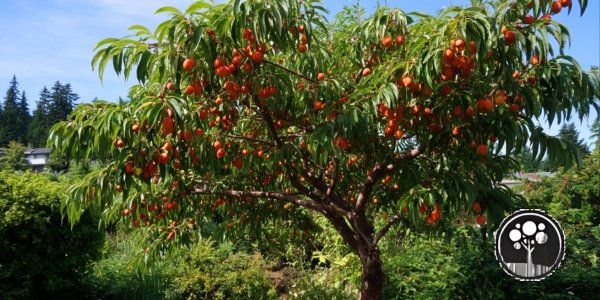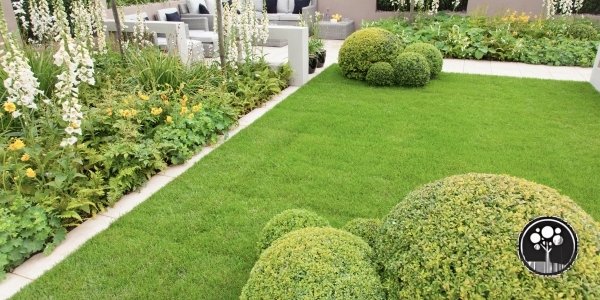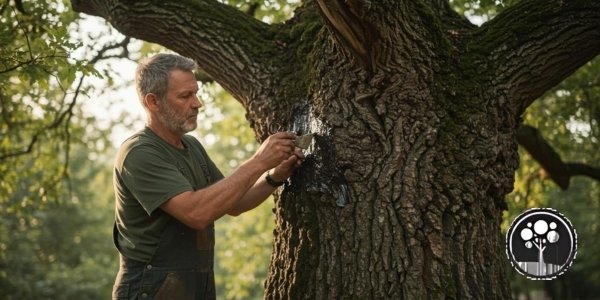When the massive windstorm hit Vancouver last March, Sarah Chen’s century-old oak tree came crashing down across her West Side driveway at 2 AM, blocking her family’s exit and threatening their home’s foundation. Within four hours of her emergency call, Aesthetic Tree and Hedge Care’s certified arborists had safely removed the fallen giant, assessed the remaining trees on her property, and developed a comprehensive plan to prevent future hazards—all while preserving the mature canopy that makes her neighborhood so desirable.
This wasn’t just exceptional service; it represented the new standard of professional tree care that Vancouver homeowners need in 2025. With the Vancouver Park Board’s updated Urban Forestry Strategy setting ambitious goals for canopy coverage and climate resilience, property owners are discovering that professional arborist services have evolved far beyond basic trimming and removal into sophisticated stewardship that protects investments, enhances property values, and contributes to our city’s environmental future.
Emergency Tree Services: When Minutes Matter for Professional Tree Care
Vancouver’s updated Urban Forestry Strategy aims to increase the city’s tree canopy coverage from about 25% to 30% by 2050, emphasizing community stewardship, climate resilience, and equitable urban forest benefits despite challenges from development pressures (CBC News, 2025).
But the city’s increasingly unpredictable weather patterns have made emergency tree services more critical than ever. From sudden windstorms to heavy snow loads that exceed what our coastal trees typically handle, emergency situations require immediate professional response that prioritizes safety while minimizing property damage.
True emergency tree services operate 24/7, 365 days a year because tree failures don’t happen on convenient schedules. When a storm brings down power lines, blocks essential access routes, or creates immediate safety hazards, homeowners need arborists who can respond within hours, not days. The difference between professional emergency response and attempting DIY solutions can literally be life-threatening.
What constitutes a genuine tree emergency? Fallen trees blocking roads or driveways, trees or large branches resting on homes or other structures, damaged trees threatening to fall on people or property, trees tangled in power lines, and storm-damaged trees creating immediate hazards. These situations require specialized equipment, extensive safety training, and expertise in working around utilities and structures.
Professional emergency response follows strict protocols: First, secure the immediate area to prevent injuries. Then assess structural damage to nearby buildings, coordinate with utility companies when power lines are involved, use appropriate equipment to safely remove debris, and finally evaluate remaining trees for additional hazard potential. This systematic approach prevents the secondary accidents that often occur during emergency situations.
The equipment makes all the difference. Professional emergency tree services arrive with specialized vehicles designed for tight residential spaces, heavy-duty rigging equipment for controlled removal of large sections, stump grinders for immediate cleanup, and communication systems to coordinate with emergency services, insurance companies, and utility providers.
What Vancouver homeowners need to know: If you ever face a tree emergency, don’t attempt removals yourself. Contact your insurance company immediately to document damage, keep receipts for all emergency tree services (often covered by insurance), and use the emergency as an opportunity to assess the health and safety of all trees on your property.
Post-emergency assessment is crucial because storms often weaken trees that appear undamaged. Professional arborists can identify stress fractures, root damage, and structural compromises that might cause delayed failures weeks or months after the initial storm event.
Comprehensive Tree Health Assessments: The Science Behind Healthy Trees
Modern tree health assessment has evolved into a sophisticated diagnostic process that combines visual evaluation, advanced technology, and deep understanding of urban forest ecology. Vancouver’s new Urban Forestry Strategy emphasizes proactive tree health management, making comprehensive assessments more valuable than ever for property owners.
Professional tree health assessments begin with systematic visual inspection that examines every aspect of tree structure: root flare and surface roots, trunk condition including bark health and structural defects, branch architecture and attachment points, leaves or needles for signs of stress or disease, and overall tree form and growth patterns. This visual assessment reveals immediate concerns while identifying subtle early warning signs of developing problems.
Advanced diagnostic tools extend assessment capabilities beyond what human observation alone can detect. Resistograph testing uses micro-drills to detect internal decay in trunks and branches. Sonic tomography creates detailed images of internal wood structure to identify hollow areas or structural weaknesses. Soil analysis reveals nutrient deficiencies, pH imbalances, and drainage issues that affect tree health. Air spade excavation allows examination of root systems without causing damage.
The most common health issues affecting Vancouver trees include fungal diseases like root rot and canker diseases that thrive in our moist climate, pest infestations including aphids, scale insects, and occasional invasive species, environmental stress from drought, soil compaction, and urban pollution, structural problems from improper pruning, construction damage, and storm injuries, and nutrient deficiencies particularly common in urban soils with limited organic matter.
Health assessment reports provide detailed documentation of current tree condition, specific recommendations for treatment or management, priority rankings for addressing multiple issues, long-term prognosis and management strategies, and estimates for recommended treatments. These reports serve as roadmaps for maintaining tree health over time while providing documentation valuable for insurance claims and property transactions.
The benefits extend beyond individual trees. Comprehensive health assessments help property owners understand how their trees interact with each other and their environment, identify opportunities to enhance overall landscape health, plan for future tree care needs and budget requirements, and contribute to neighborhood canopy goals outlined in Vancouver’s forestry strategy.
Strategic Pruning: Science-Based Professional Tree Care for Long-Term Tree Health
Gone are the days when tree pruning meant indiscriminate cutting to reduce size or increase light. Modern strategic pruning represents a sophisticated understanding of tree biology, structural engineering, and long-term forest health that aligns with Vancouver’s goals for sustainable urban forestry.
Structural pruning focuses on developing strong tree architecture that can withstand Vancouver’s weather extremes while maintaining natural form. This involves removing weak branch attachments, establishing proper branch spacing, correcting growth defects early in tree development, and promoting balanced weight distribution throughout the canopy. Young trees benefit enormously from structural pruning that sets them up for decades of healthy growth.
Risk reduction pruning identifies and addresses potential failure points before they become hazardous. This specialized approach evaluates branch size relative to attachment points, identifies decay or damage that compromises structural integrity, removes deadwood that could fall and cause injury or damage, and reduces sail area in trees prone to wind damage. The goal is maintaining tree health while minimizing liability and safety concerns.
Health-focused pruning removes diseased, damaged, or dying tissue while promoting air circulation and light penetration throughout the canopy. This approach helps prevent disease spread, encourages healthy new growth, improves overall tree vigor, and extends tree lifespan significantly. Proper pruning cuts heal quickly and resist infection when performed by trained professionals.
Species-specific pruning techniques recognize that different trees have unique growth patterns, healing responses, and structural requirements. Oak trees require different approaches than maple trees, which differ from evergreen species like Douglas fir or cedar. Understanding these differences prevents the common mistakes that can permanently damage trees or create long-term health problems.
Timing matters tremendously in strategic pruning. Different species have optimal pruning windows that maximize healing while minimizing stress and disease risk. Some trees are best pruned during dormancy, while others should be pruned during active growth periods. Disease considerations also influence timing—oak wilt, for example, requires avoiding pruning during specific months when infection risk is highest.
The pruning process begins with assessment of tree health, structure, and goals, followed by systematic removal of dead, diseased, or damaged wood. Then structural issues are addressed, weight distribution is improved, and finally, selective thinning promotes air circulation and light penetration. Each cut is made with precision to promote proper healing and prevent decay or injury.
Sustainable Tree Care: Environmental Stewardship in Action
Vancouver’s commitment to environmental sustainability extends deeply into professional tree care practices, with 2025 seeing unprecedented focus on eco-friendly approaches that support both individual tree health and broader ecosystem goals outlined in the city’s Urban Forestry Strategy.
Organic soil improvement forms the foundation of sustainable tree care. Instead of relying on synthetic fertilizers that can harm soil microorganisms and contaminate groundwater, professional arborists now emphasize compost applications, mycorrhizal inoculants that enhance root function, biochar additions that improve soil structure and carbon sequestration, and organic mulches that gradually decompose to feed soil biology. These approaches create self-sustaining soil health that supports long-term tree vigor.
Integrated Pest Management (IPM) minimizes chemical inputs while effectively controlling pest and disease problems. This approach emphasizes prevention through proper tree care and site selection, biological controls using beneficial insects and microorganisms, mechanical interventions like pruning infected material, and targeted applications of low-impact treatments only when necessary. This comprehensive approach protects beneficial insects, maintains soil health, and reduces environmental contamination while effectively managing tree health issues.
Water conservation strategies have become increasingly important as Vancouver faces changing precipitation patterns and growing environmental awareness. Professional arborists now emphasize deep watering techniques that encourage deep root growth, mulching strategies that retain soil moisture and reduce irrigation needs, drought-tolerant species selection for new plantings, and soil amendments that improve water retention capacity. These approaches reduce water consumption while promoting more resilient tree populations.
Carbon sequestration awareness influences every aspect of modern tree care. Mature trees represent massive carbon storage investments—a single large oak can store over 48 pounds of carbon dioxide annually. This understanding drives preservation-focused approaches that extend tree lifespan, strategic management that maximizes growth rates during peak sequestration years, and replacement planning that considers carbon impact when tree removal becomes necessary.
Waste reduction and recycling ensure that tree care activities contribute positively to environmental goals. Modern professional services convert removed wood into useful products like mulch, compost, or lumber rather than sending it to landfills, utilize chipped branches and leaves for soil improvement projects, and partner with local organizations to donate usable wood for community projects or firewood programs.
Native species promotion supports Vancouver’s broader ecological goals by enhancing habitat for local wildlife, reducing irrigation and maintenance requirements, improving resistance to local pests and diseases, and maintaining the character of Pacific Northwest landscapes. Professional arborists help property owners select species that thrive in local conditions while supporting urban forest diversity.
Vancouver’s Urban Forest Future: Your Role in the Big Picture
The Vancouver Park Board’s ambitious Urban Forestry Strategy sets a goal of 30% canopy coverage by 2050, recognizing trees as critical infrastructure for climate resilience, air quality, stormwater management, and community well-being. Every tree on private property contributes to this citywide vision, making professional tree care a form of civic engagement.
Climate adaptation drives much of Vancouver’s forestry planning, with recognition that our urban forest must become more resilient to changing weather patterns, including more intense storms, extended dry periods, increased temperatures, and potential new pest and disease pressures. Professional tree care helps existing trees adapt to these challenges while ensuring new plantings can thrive in future conditions.
The economic value of Vancouver’s urban forest is substantial, with studies indicating that established trees provide thousands of dollars in annual benefits per tree through energy savings, stormwater management, air purification, and property value enhancement. Professional tree care protects these investments while maximizing their return through proper health management and longevity planning.
Property owner responsibilities are evolving as the city recognizes the importance of private trees in achieving broader environmental goals. This includes maintaining trees in good health to maximize their environmental benefits, replacing removed trees when possible to maintain canopy coverage, selecting appropriate species for long-term success and environmental contribution, and working with certified professionals to ensure proper care techniques.
Community impact extends beyond individual properties. Healthy mature trees provide shade that reduces neighborhood temperatures, wildlife habitat that supports urban biodiversity, visual beauty that enhances quality of life, and improved air quality that benefits everyone. Professional tree care ensures these community benefits continue for generations.
Future planning considerations include anticipating how trees will grow and change over time, planning for succession when mature trees eventually need replacement, coordinating with neighbors and the city on broader canopy goals, and staying informed about evolving best practices in urban forestry.
Choosing Your Vancouver Arborist: What Excellence Looks Like
The tree care industry has grown rapidly, but not all providers offer the same level of expertise, safety standards, or environmental consciousness. For Vancouver property owners, selecting the right arborist can mean the difference between trees that thrive for decades and costly problems that compound over time.
Certification and credentials should be your starting point. Look for International Society of Arboriculture (ISA) Certified Arborists who have demonstrated knowledge through rigorous testing and continuing education requirements. Additional certifications in areas like tree risk assessment, utility line clearance, or municipal forestry indicate specialized expertise relevant to specific situations.
Insurance and safety standards protect both workers and property owners. Comprehensive liability coverage should include property damage, worker injury, and professional liability protection. Ask to see current certificates and verify coverage amounts. Professional crews should demonstrate proper safety equipment use, follow industry safety protocols, and maintain clean safety records.
Environmental commitment aligns with Vancouver’s sustainability goals and indicates forward-thinking business practices. This includes organic care options, waste reduction and recycling programs, native species knowledge, and understanding of ecosystem impacts. Companies that invest in environmental education and sustainable practices generally provide higher-quality services.
Local knowledge matters tremendously in tree care. Vancouver’s unique climate, soil conditions, common pest and disease issues, and municipal regulations require specific expertise that out-of-area providers may lack. Established local companies understand seasonal timing, species-specific considerations, and neighborhood-specific challenges that affect care recommendations.
Communication and education distinguish professional services from basic tree work. Quality arborists explain their recommendations, help property owners understand tree biology and care requirements, provide detailed written estimates and care plans, and follow up to ensure satisfaction and monitor tree response to treatments.
What This Means for Vancouver Property Owners
Professional tree care in 2025 represents far more than maintenance—it’s an investment in property value, environmental stewardship, and community well-being that aligns with Vancouver’s vision for a sustainable urban future. Whether you’re dealing with emergency storm damage, planning preventive health care, or contributing to the city’s ambitious canopy goals, the expertise and environmental consciousness of modern professional arborists provide tools and knowledge that were unimaginable just a few years ago.
The key to successful tree care lies in understanding that trees are long-term investments requiring professional expertise to reach their full potential. When properly cared for by certified professionals, your trees become valuable assets that provide decades of benefits while contributing to Vancouver’s broader environmental and community goals.
Ready to Protect and Enhance Your Vancouver Trees?
Don’t wait until the next storm or tree emergency strikes. Contact Aesthetic Tree and Hedge Care today for expert, certified arborist services tailored to Vancouver’s unique urban forest challenges. Whether you need emergency tree removal, health assessments, or sustainable care solutions, our dedicated team is here to help you preserve your property’s natural beauty and value.
Get a Free Consultation & Estimate Now »
Takeaway:
Vancouver’s professional tree care industry has evolved into sophisticated environmental stewardship that protects property investments while contributing to citywide sustainability goals. Success depends on choosing experienced, certified arborists who combine technical expertise with environmental consciousness and genuine commitment to tree health and urban forest preservation.
